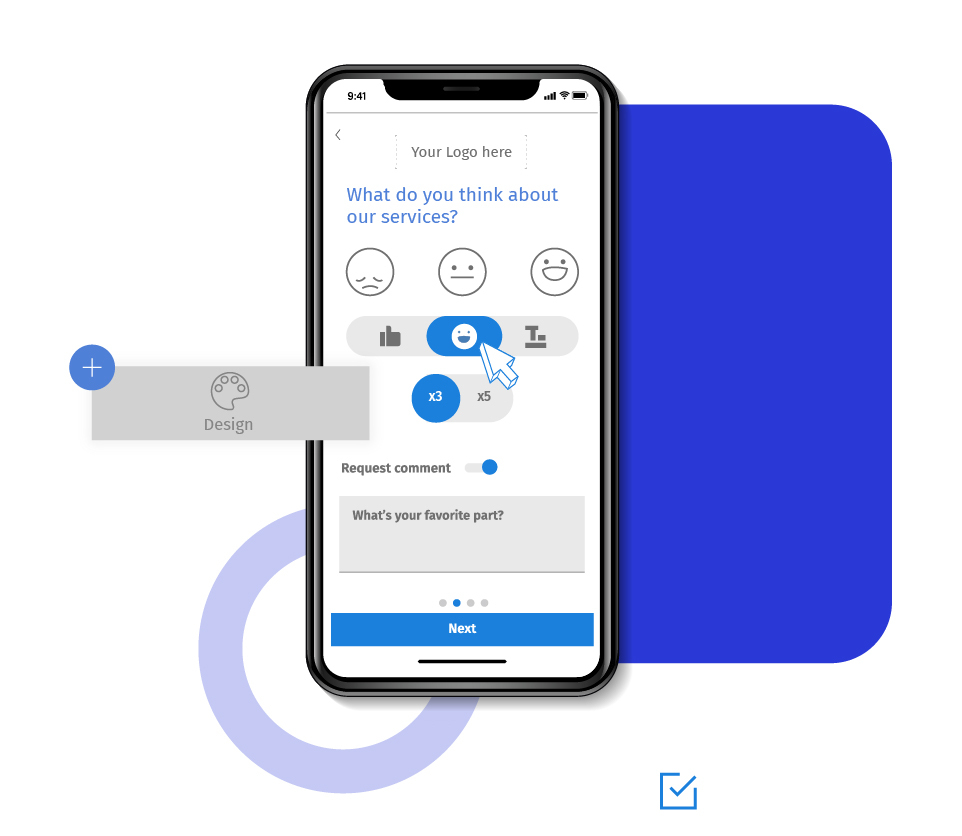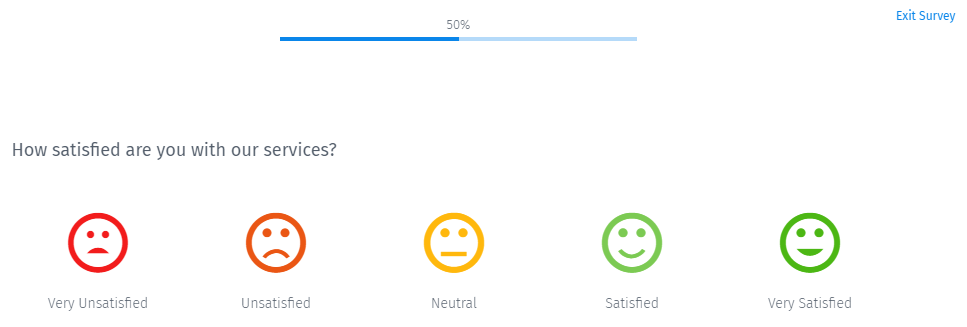The progress bar calculates the percentage based on the total number of pages in the survey, irrespective of whether all pages are shown to the respondent. For a single page survey, the progress bar will show 100% loaded. Hence, we recommend using the progress bar for multi-page surveys only. The system recalculates the percentage each time a survey page is submitted by clicking on the 'Next' or 'Submit' buttons.
While testing, you may notice that the percentages are lower than actual or increase too much as you move through the survey. It is due to the use of logic like skip logic, compound branching, etc. Logic dynamically changes the number of pages that respondents see.
You can change the color of the progress bar to match your brand style and create branded surveys. You can also change the location of the progress bar such that it is most respondent-friendly.
Example of a progress bar in a survey
Assume a customer feedback survey has four questions in the questionnaire with a page break after each question. With the total number of pages making 100%, each page is 25% of the complete survey. So, when the respondents are on page two, it will show a 50% complete progress bar.

Uses of a progress bar in surveys
Lengthy surveys: If a research study has too many questions, a respondent is more likely to get eager to know how much progress they have already made in completing the survey. A progress bar gives them a hint about the percentage of the study that has already loaded.
Branding: You can create branded surveys with a custom color of a progress bar that matches your brand style. It will reinforce your business's brand in the customers' minds.
Advantages of using a progress bar in surveys
Higher completion rate: People stay motivated when they see that they are making progress. It leads to a higher completion rate and overall better results. Without a progress bar, there is no way survey takers can know how long the questionnaire will be. However, with a progress bar, there is no such uncertainty, and the respondents know from the very beginning.
Transparency: It gives an idea of the percentage of the survey that has loaded, and the number of questions respondents need to complete. It is not possible with telephonic surveys. Thus online surveys are more transparent and credible.
Better results: A good respondent experience translates into good survey results, which, in turn, convert into great insights. The participants will be more likely to complete a survey with honest answers when offered complete transparency and freedom using progress bars.
How to set up a progress bar in your surveys?
Learn how to set up and use this feature with our help file on the progress bar.
Survey Software Easy to use and accessible for everyone. Design, send and analyze online surveys.
Research Suite A suite of enterprise-grade research tools for market research professionals.
Customer Experience Experiences change the world. Deliver the best with our CX management software.
Employee Experience Create the best employee experience and act on real-time data from end to end.






